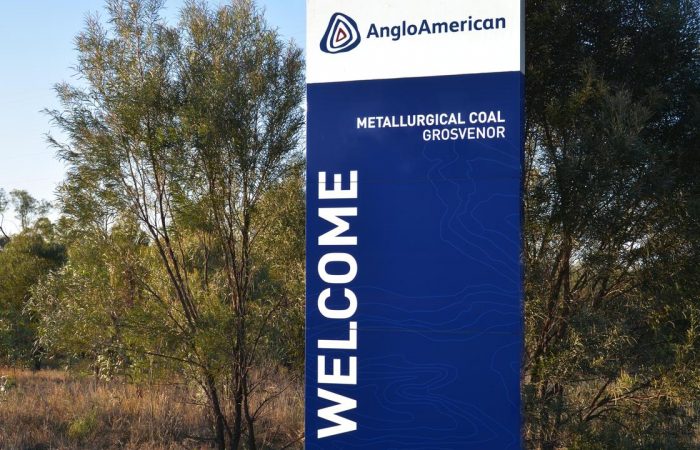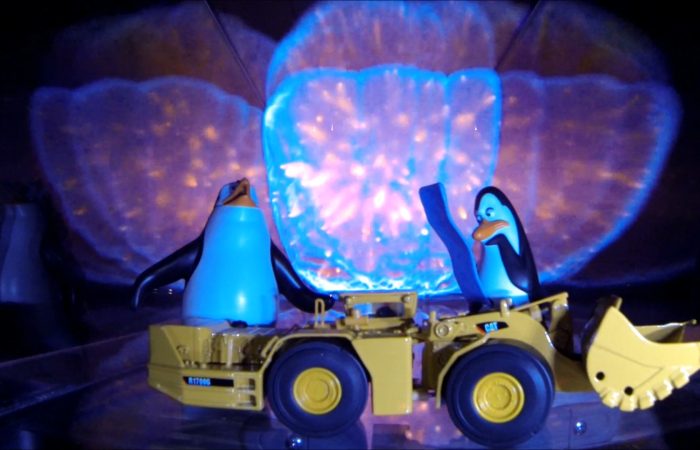
In addition, the manager, albeit prompted by others, arranged for a risk assessment of the proposed extraction design. The assessment made scant reference to spontaneous combustion and then only with a low level probability that it could arise from the extraction of bottom coal. Moreover, the consequence of an occurrence was rated at the lowest safety level, mentioning short panel life and use of continuous gas monitoring as existing safeguards
This Mining Inquiry comment has a familiar ring after the Grosvenor Inquiry.
Mine Manager being prompted about spontaneous combustion risk assessment.
Spontaneous Combustion rated low.
Use of continuous gas monitoring as existing safeguards
These comments were made by Mining Warden Frank Windridge in the Moura 2 Inquiry Report released in January 1996
It shows the Industry just refuses to change over the decades and continue to just rely on the same bullshit.
Spontaneous Combustion. Not a problem. Our coal does not like to burn, well not much
We monitor it, we have the best equipment and the best people.
Methane over 2.5% at the face. Coal Seam and surrounding strata full of the stuff. Not a real problem.
We are so much smarter than them idiots from past generations.
OH F…!
How were we to know that there could be a methane explosion?
We monitored it?
What else can go wrong?
What we have to seal the mine from the surface from out of control spontaneous combustion? HOW? We monitored it.
How have things got this bad? We monitored it.
What, there has been another explosion due to Spontaneous Combustion igniting methane!
Who would have thought that?
We monitored it and we are so much smarter than them idiots from past generations!
Second Working Notices to the Mines Inspectors came up during the Grosvenor Inquiry.
There are a very limited number of approvals or written acknowledgements required from the Inspectors and Chief Inspector of Coal Mines under the CMSHA 1999 and CMSHR 2001
Second Workings Notices used to require the WRITTEN APPROVAL by a Mines Inspector BEFORE Second Workings started under the old Coal Mining Act.
The Mines Department and Chief Inspector of the time were very firmly opposed to the giving of Approvals at all.
The only reason the Department and Inspectors agreed to keep approval for persons to remain underground after sealing part of the Mine was that after the events at Moura No 2, it was politically and practically impossible for them to oppose it in Public.
However, when it came to requirements to approve Second Works Plans and Procedures; The Chief Inspector and Department flatly refused to carry the Approval over into the new Regulations and in particular S 320 of the 2001 Regulations.
This was one of Mining Warden Windridge’s recommendations that was not accepted in full by the Government
What was the major concern for the Department and the Inspectors?
Being held as contributing or liable along with the Mine Management if more Coal Mines had methane explosions when doing second workings.
From what we have seen and heard from the limited testimony of Mines Inspectors at the Grosvenor Inquiry about their oversight, it seems that the Inspectors and Departments concerns were justified.
Second Workings Notices to the Inspectorate came up during the Moura No 2 Inquiry and Mining Warden Windridge made the following comments.
PANEL DESIGN
Part 60 of the General Rules for Underground Coal Mines (Second Working Extraction) requires the mine manager to submit to the inspector, for approval, full details of the proposed scheme of work for the extraction of pillars or of secondary workings of bottom coal.
The legislation stipulates the submission to include information on a list of factors all of which clearly relate to the safety of the proposed scheme of work.
None of these factors, however, refer specifically to or can be construed as being directly related to spontaneous combustion as an issue for consideration in the proposed scheme of work.
The requirements, as set out, were complied with at Moura No 2 in respect of 512 Panel. In addition, the manager, albeit prompted by others, arranged for a risk assessment of the proposed extraction design. The assessment made scant reference to spontaneous combustion and then only with a low level probability that it could arise from the extraction of bottom coal.
Moreover, the consequence of an occurrence was rated at the lowest safety level, mentioning short panel life and use of continuous gas monitoring as existing safeguards. Flooding the panel with water was mentioned as a further safeguard if required.
As we now know, the factors considered and taken account of in the design of 512 Panel and its extraction were lamentably inadequate.
It is recommended, therefore, that it be made a requirement of Part 60 (Second Working Extraction) submissions that spontaneous combustion be specifically included as a factor to be considered and evaluated.
The Mines Department and Chief Inspector of the time were very firmly opposed to the giving of Approvals at all.
The only reason the Department and Inspectors agreed to keep approval for persons to remain underground after sealing part of the Mine was that after the events at Moura No 2, it was politically and practically impossible for them to oppose it in Public.
However, when it came to requirements to approve Second Works Plans and Procedures; The Chief Inspector and Department flatly refused to carry the Approval over into the new Regulations and in particular S 320 of the 2001 Regulations.
This was one of Mining Warden Windridge’s recommendations that was not accepted in full by the Government
For LW 104 the Notice was sent on at 11;30 March 6th 2020, the Mines Inspector replied at 11:56 am March 6; and Longwall mining started on the 9th of March.
11:30 UMM emailed DNRME Inspector of Mines notice to Commence Second Workings LW104 under s230, with the following attachments:
- Notice to Commence Second Working Letter
- LW104 Second Workings Risk Assessment.
- LW104 Second Workings Standard Operating Procedure.
11:56 Reply from DNRME Inspector of Mines – “Confirming I have received your notice for second workings LW104 pursuant to s320 of the Regulations”.
Three days for Inspectors to digest the information does not sound like a great deal of time but it seems that Grosvenor Management like leaving the Notice till only days before Longwall Mining commences.
Inspector Gouldstone in his MRE for the 11th of December 2018 makes this comment. MRE – Grosvenor Coal Mine RG Floor blowers – 11.12.2018.pdf
Cutting will commence on Saturday 15 December 2018 after the ventilation change.
Mr Niehaus undertook to give notice of second workings formally before the commencement of cutting operations and provide a copy of the latest ventilation survey results after the ventilation change.
Inspectors of Mines Les Marlborough and Richard Gouldstone Mine Record Entry of the 9th May 2018 contains the following comments about Methane and planning for LW 103. MRE – Grosvenor Coal Mine – 9.5.2018
We made the following points in conclusion;-
Intake pollution round the bleeder is a significant impact on the methane levels. This apparent with 0.4% showing on the MG methane monitor.
The Mine should consider options for reducing this including reversing air around the bleeder
We made the following points in conclusion;-
4. It was acknowledged that the Mine has conducted a significant amount of work to manage the gas in the LW TG and should be congratulated on the improvements in goaf drainage that have resulted from this.
The lessons learned from this work will be utilised in managing methane in LW103 which has significant challenges with its position under the Isaac River and the difficulty this imposes on goaf drainage hole positioning.
5. It was also acknowledged that continued HPl’s with Methane greater than 2.5% was not satisfactory and the mine must ensure that such HPl’s are minimised, and preferably eliminated going forward.
Inspector Gouldstone made this comment about MG MRE 6th August 2019 MRE – Grosvenor Coal Mine RG – 06.08.2018.pdf
3.2. Other Matters
Though not dealt with in detail in this instance there were other topics which were briefly referenced in discussions which were
- On going exchanges with methane exceedances
- Plans for risk assessment second workings LW 103 should be notified well before commencement, I requested a presentation of intentions based on LW 102 & 101 learnings
- Long term ventilation strategy and use of satellite shafts
LW103 Installation and Dust Mitigation Inspector Gouldstone 11th December 2018
The final 25 supports are to be installed with support commissioning in progress.
A major vent change to establish 60 cubic metres/second on the longwall, maintain the bleeder as an intake to LW104 to return to LW103 and establish homotropal ventilation in the belt road.
Ventilating past previous longwall seals results in 0.3% methane reporting to the longwall maingate.
A vent shaft is planned for longwall 104 which will dispense with the need for the current bleeder.
Cutting will commence on Saturday 15 December 2018 after the ventilation change.
Mr Niehaus undertook to give notice of second workings formally before the commencement of cutting operations and provide a copy of the latest ventilation survey results after the ventilation change.
The meeting was called at the request of Inspector Marlborough to discuss the recent 27 exceedances of 2 5% methane in the LWI 02 TG. Mr Marlborough had in the lead up to this meeting discussed with the Mine the following issues
Can the air around the “bleeder road” be reversed and this would allow suction to be applied to inertisation lines through the perimeter goaf seals on the TG side of the bleeder to draw the methane fringe away from the TG end of the face
Reconsidering if the bleeder could be made a return.
Inspector Marlborough requested a copy of the Ventsim model which was the basis for the Mine decision to discount this option
During the discussions the Inspectors have raised several items for consideration;
Putting “bleeder road” onto return to create a negative pressure across the goaf to draw the gas fringe away from the TG end;
Applying suction to inertisation lines in goaf seals behind the LW after bleeder is put on return;
MRE – Grosvenor Coal Mine – 18.01.2018
MG103 Development the emissions generated were due to floor coal being left capping the lower part of the seam below the Tonstein band which periodically ruptured.
The thicker the floor coal the more significant the emission with examination of minor peaks traced as being attributable to thinner floor coal.

